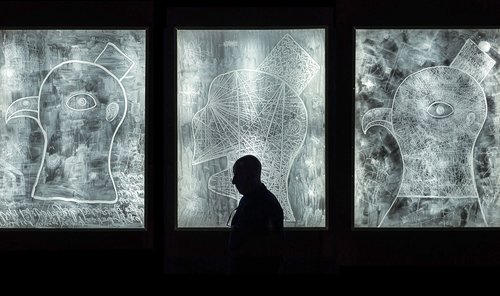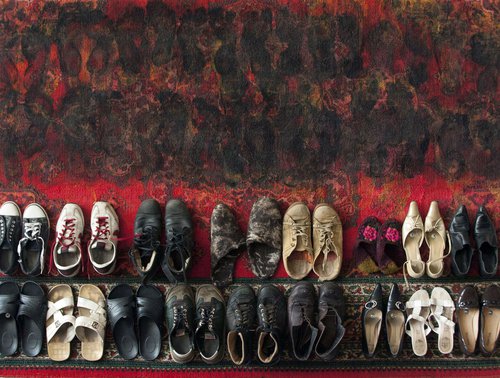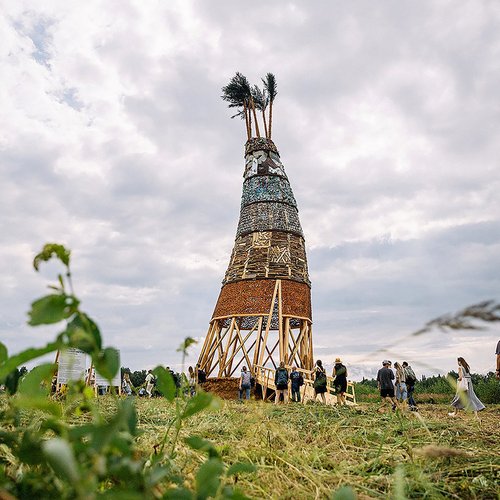The Brodskys and the Architecture of Power in Milan

Alexander and Sasha Brodsky. Piazza senza nome. Instalaltion view, 2024. Photo by Sasha Brodsky. Courtesy Fondazione Galleria Milano
Bridging a generational and geographical divide, father and son Alexander and Sasha Brodsky have come together at Fondazione Galleria Milano to show a site-specific installation, ‘Nameless Square’ juxtaposing raw earth with architectural motifs and an invitation for us to reflect on power, history and ties that bind across time and space.
In Milan, Moscow-based artist and architect Alexander Brodsky (b. 1955) and his son Sasha Brodsky (b. 1995), a printmaker and musician who lives in New York, have reunited with a powerful artistic dialogue at the city´s new Fondazione Galleria Milano. Assembled in the centre of the main exhibition space is an imposing, site-specific installation consisting of a large three-dimensional cuboid enclosure set on a metal frame, made of gray earth, massive yet fragile, built around what turns out to be a bustling urban square. Inside it there are throngs of people, in the form of little shapes and nails, positioned like faceless pawns between three gigantic obelisks, a large fountain and several multifaceted monuments. Visitors can only peek inside the installation through small irregular ‘windows’ dotted throughout the expansive, rough surface of the structure. From the inside, with a play on scale, the sides of the enclosure look like high and impenetrable boundary walls.
There is a dramatic, bold and striking disproportionality between the architectural structure with its imposing monuments, and the tiny, anonymous figures inside. Here, you feel the powerlessness of individuals in the face of their surroundings. On the one hand, the high walls serve to protect, yet they offer no escape route. The square is a kind of grandiose, open-air prison. The image of the city square which is enclosed in the structure feels timeless. It looks ancient but at the same time could be a contemporary Middle Eastern, Mediterranean or North African urban agglomeration, preserving centuries of history. The monuments might well attest to the power of colonizers and warmongers over the centuries, representing their conquering power in architectural forms.
On the walls of the exhibition space there are engravings created by Sasha Brodsky during a previous workshop in Florence which dialogue with the installation. They serve as a creative link between the visual art and the architecture, reflecting the distinct approaches of each of these two artists. In the lower floor of the Galleria Milano there is a library and historical archive and here you find a selection of Alexander Brodsky’s engravings from the late 1990s, his work has been the subject of several solo shows in the gallery in the past, ‘Ultima stanza’ in 2002, ‘Tre tavoli’ in 2006 and ‘White Windows’ in 2010. The curator chose to include the artist’s archival works from the 1990s because they resonate with the themes of the current show. It is also a tribute to the longstanding programming of the gallery, which from 1965 to 2019 was directed by Carla Pellegrini Rocca and has now been turned into an art foundation. Fondazione Galleria Milano reopened in March after almost two years of closure.
Alexander e Sasha Brodsky. Piazza senza nome
Fondazione Galleria Milano
Milan, Italy
March 21 – June 8, 2024
















